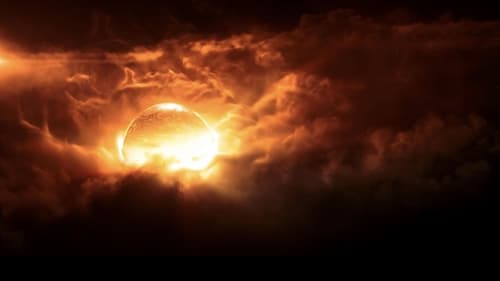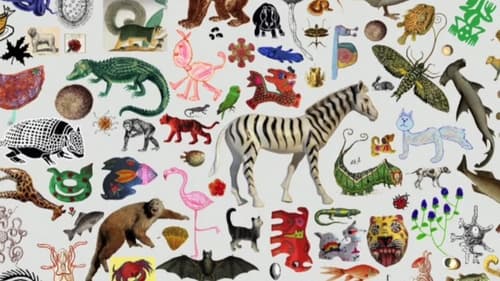
Producer

Producer
At the edge of our solar system supposedly lies an immense planet. Five to ten times the size of the Earth. Several international teams of scientists have been competing in a frantic race to detect it, in uncharted territories, far beyond Neptune. The recent discovery of several dwarf planets, with intriguing trajectories, have put astronomers on the trail of this mysterious planet. Why is this enigmatic planet so difficult to detect? What would a ninth planet teach us about our corner of the universe? Could it help us unlock some of the mysteries of our solar system?

Director
In a humanitarian camp opened in Paris, refugees are in transit. In this "first reception" center, they are resting from the street where they were stranded when they arrived in France. A few days of humanity, that we spend with them. But already, they have to face the Prefecture and hear the cold administrative sentence. We are always with them.

Writer
In 1924, a garden city, called “Ungemach”, was inaugurated in Strasbourg; it was restricted to couples who bore “healthy and fertile strains”. This officially eugenicist experience was endorsed by both political and scientific authorities, and the selection system lasted until the 1980s! To understand the genesis of such a project, it is necessary to revisit the history of eugenics. We will first go to England, where the concept was born and developed in the 1880s. Then to the United States, Switzerland, the Nordic countries, Japan, where, since the 1920s, large-scale sterilization policies have been implemented to eradicate health and social "defects", long before Nazi Germany. This question of eugenics is a universal one; its implementations were numerous and it still permeates ethical debates on medically assisted procreation techniques or Transhumanism today.

Director
In 1924, a garden city, called “Ungemach”, was inaugurated in Strasbourg; it was restricted to couples who bore “healthy and fertile strains”. This officially eugenicist experience was endorsed by both political and scientific authorities, and the selection system lasted until the 1980s! To understand the genesis of such a project, it is necessary to revisit the history of eugenics. We will first go to England, where the concept was born and developed in the 1880s. Then to the United States, Switzerland, the Nordic countries, Japan, where, since the 1920s, large-scale sterilization policies have been implemented to eradicate health and social "defects", long before Nazi Germany. This question of eugenics is a universal one; its implementations were numerous and it still permeates ethical debates on medically assisted procreation techniques or Transhumanism today.

Producer
Here is the “lower-risk consumption room”, the drug injection room that opened in October 2016 in a building at Lariboisière Hospital in Paris. A place that the film never quits, except for a few seconds out on a stretch of pavement, as the credits open. One or two shots are enough to establish the exterior and remind us of the hostility of some nearby residents – the glimpse of a board tied to a window: “No to the drug injection room”.

Producer

Producer
Conheça a história de uma das missões espaciais mais complexas e ambiciosas já realizadas. Seu objetivo: entender a origem e a evolução do nosso Sistema Solar e investigar o papel que os cometas podem ter desempenhado nos primórdios da vida na Terra.

Scenario Writer

Director

Writer
Coming in all shapes and sizes, bacteria are present in every corner of the Earth. Their purposes and types are even more diverse, with only 1% being truly harmful. Dive into the world of Bacteria to experience the latest discoveries and scientific knowledge surrounding these plentiful and necessary microbes.

Producer
Albert Einstein's theory of general relativity has revolutionised our understanding of gravity, space and time. Initially acclaimed, then forgotten, and now rediscovered, the adventure of this hundred-year-old theory has marked the scientific history of the 20th century. From its inception, a mathematical difficulty arose that could have nipped the theory in the bud: the Schwarzschild singularity. In the company of great international relativistic physicists, the viewer embarks on a discovery of this theory with a singular destiny. We discover a "curved" universe that proves to be even stranger than Einstein had envisioned, and harbours some objects - such as black holes - that still challenge today's scientists.

Director

Writer
Species of species renews our representation of the tree of life and reveals to us that the millions of species that inhabit the planet, ours included, all belong to a single and immense family. How to classify living species? What criterion should be used to sort them? The number of legs? The presence of wings, feathers, hair, scales? Not so simple...

Director
Alain Crezé saw his entire herd go to slaughter because of a single case of mad cow. He wants to leave the farming profession. It is less a whim than a fed up: "before we fed people, today we enrich the food industry". He is 45 years old. Convert but to do what? The questions of work, of "know-how", of the desire to exercise a trade rather than occupying a job, of lifelong training, of acceptance of the rules of the system then arise.









